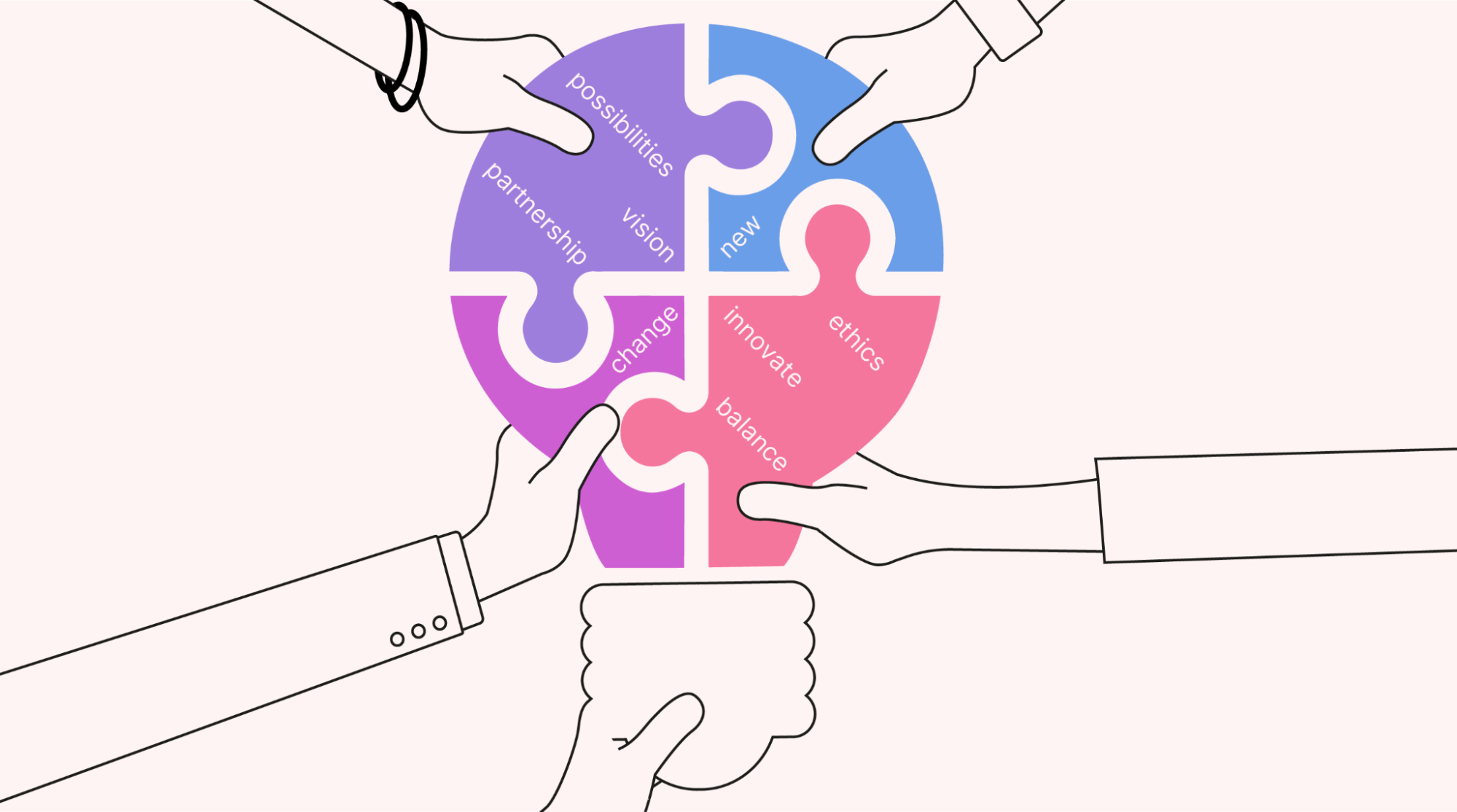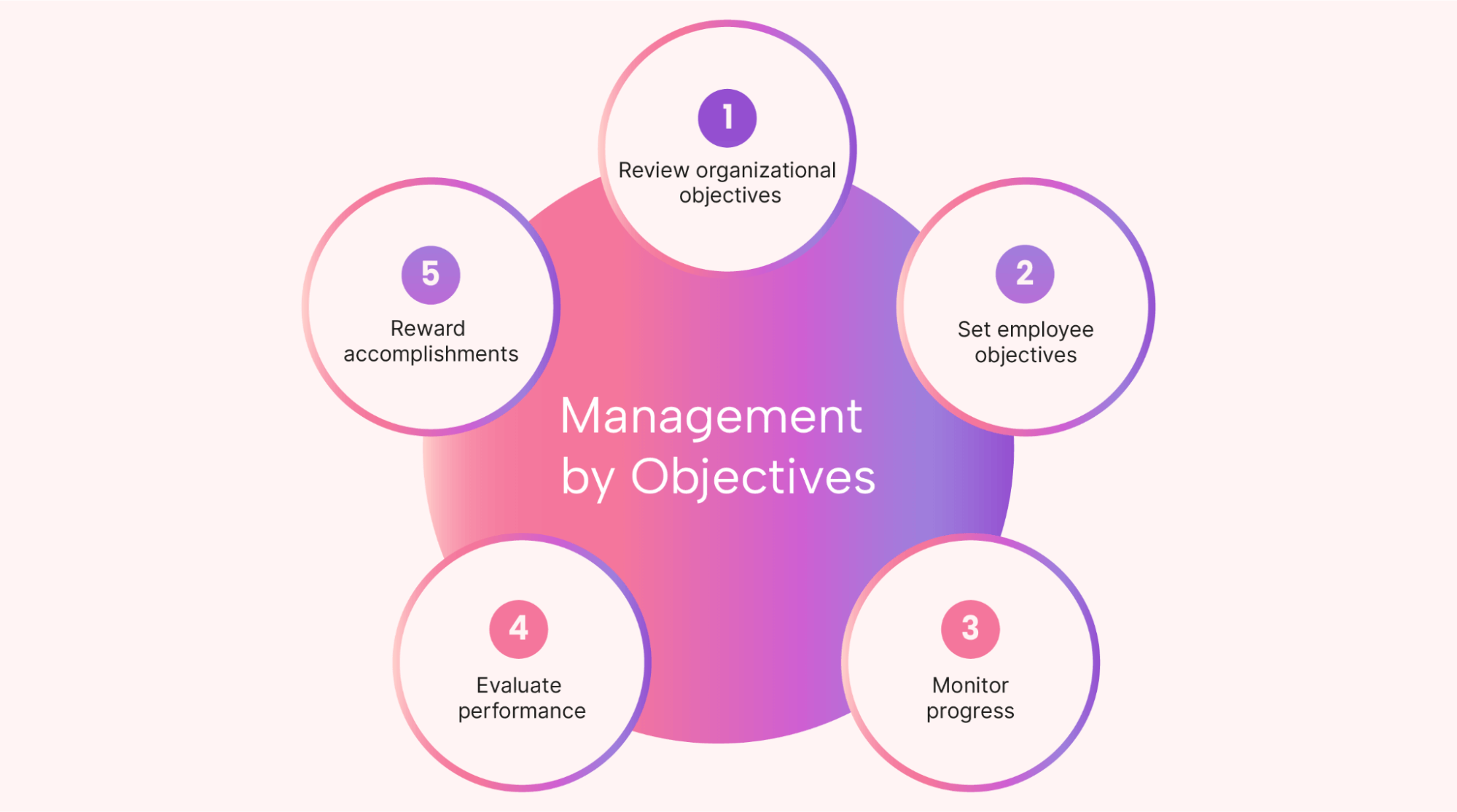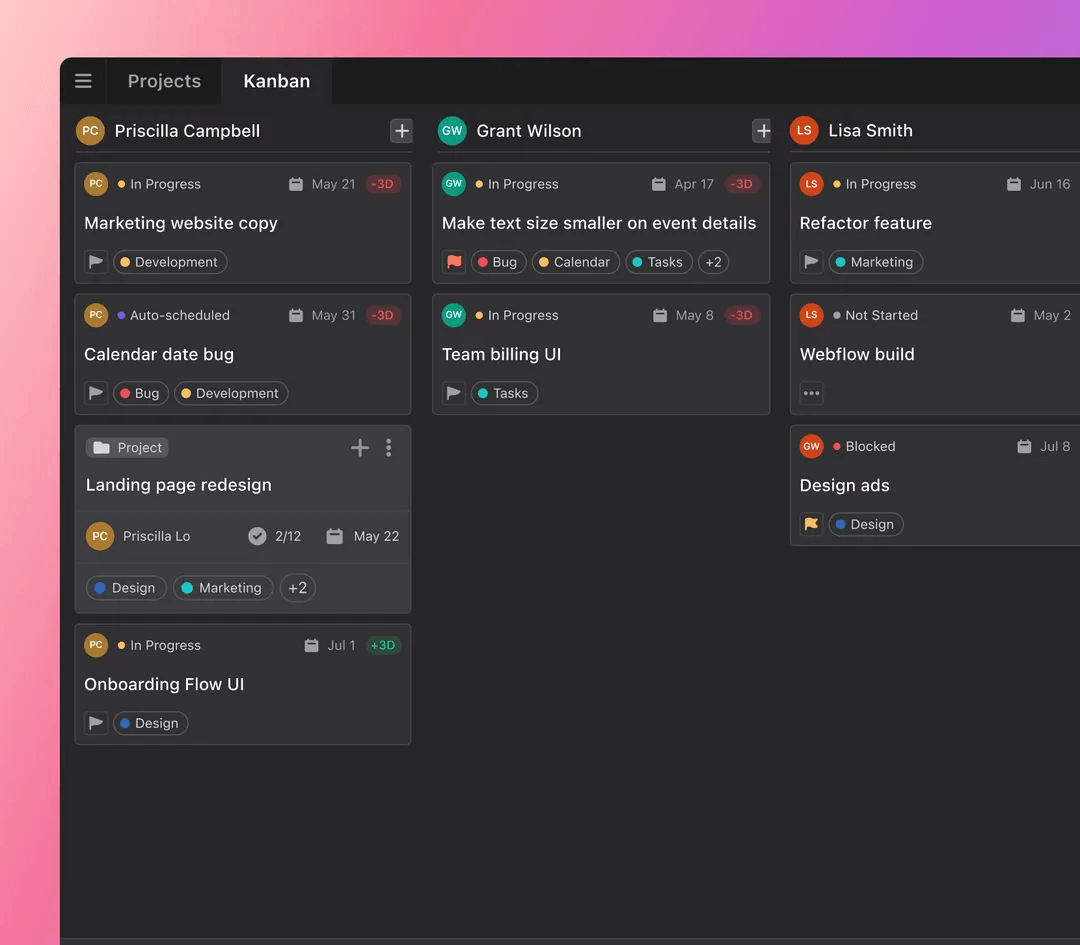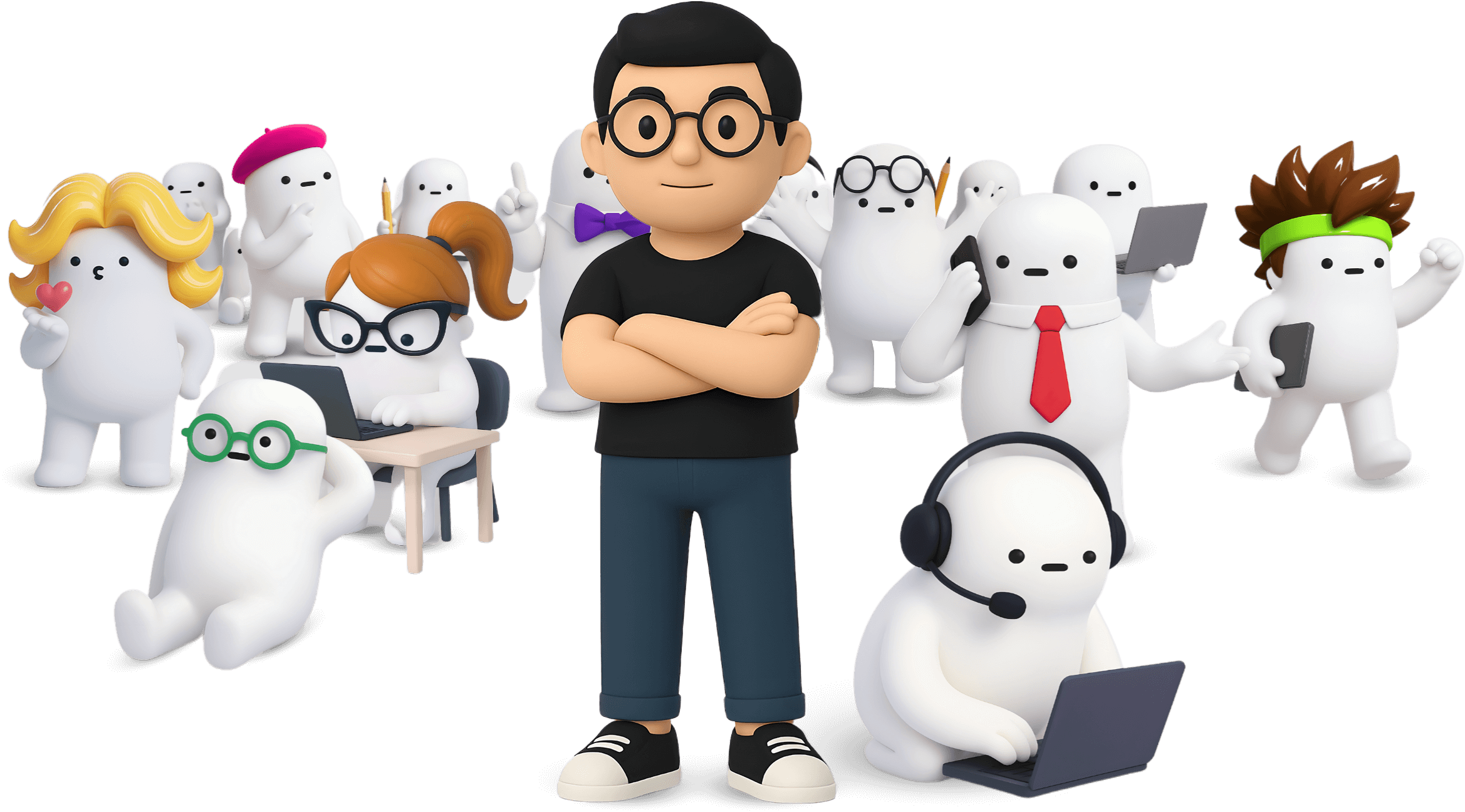By 2025, millennials will make up 75% of the workforce — and they want change.
The CEO role is losing relevance fast, meaning top-down management is becoming a thing of the past.
This generation is looking for transparency, shared decision-making, and a sense of communal purpose. They are challenging traditional silos and advocating for work environments in which leadership is a collective responsibility. As a result, collaborative management styles are taking center stage.
To engage and resonate with this generation of workers, you need to understand collaboration management, including what it is and its advantages, traits, and implementation.
What is collaboration management?
Collaboration management is a management style in which managers, executives, and employees work together to make decisions, solve problems, and meet objectives.
This means information doesn’t just trickle down from the top. Instead, it flows back and forth. Everyone in the company shares responsibility for the team’s wins and losses.
Collaboration management aims to break down the traditional office hierarchy, creating a culture of teamwork and mutual respect.
Advantages of collaboration management
Collaboration management offers plenty of advantages for the modern workforce. But what’s really noteworthy is that these advantages are the same things that millennial workers are looking for. They want stronger bonds, more engagement at work, and an inclusive environment that values their voices. As a result, this management style might help your organization attract and retain millennial talent.
Let’s take a deeper look at what it offers.
Stronger relationships
Employees today crave meaningful interactions and a sense of belonging. In fact, 69.5% of employees say they’d be happier if they developed deeper connections at work.
Effective collaboration management responds to this need by emphasizing the importance of strong relationships between team members.
A collaborative work environment involves navigating difficulties, celebrating successes, and learning from setbacks as a group, all of which require trust, communication, and empathy. These shared emotional experiences are crucial to forming deep, meaningful connections.
Increased employee engagement and morale
Employees who participate in decision-making or problem-solving often feel more invested in company projects. Acknowledging their input gives them a sense of ownership that amplifies their commitment to their tasks.
 |
As a result, you have a workforce that’s more engaged and actively involved in the company’s successes and challenges. Additionally, a heightened level of engagement directly correlates with higher job satisfaction, productivity, and a happier and more committed workforce.
Collective intelligence
The whole is greater than the sum of its parts. Cross-functional collaboration leverages this principle by pooling together a team’s diverse skills, experiences, and perspectives.
Multiple perspectives become a catalyst for innovation. Collective intelligence not only encourages out-of-the-box thinking but also brings about solutions that may not have been conceivable from a single point of view.
Shared accountability
In a collaborative management setting, the concept of “every man for himself” is replaced with shared accountability. Unity in both the good times and the bad reinforces a sense of togetherness and a collective identity.
This management method turns the workplace into a space where successes are sweeter because they are shared, and obstacles are less challenging with the strength and support of the entire team. It also encourages continual improvement, as each person understands that their actions directly impact the team.
5 essential traits of collaboration management
Shifting from a traditional management framework to a collaborative approach isn’t easy. You need to embrace new traits and fundamentally reshape the leadership ethos.
Here are five essential characteristics that collaborative leaders should develop:
1. Open communication
Open communication keeps your collaborative workforce aligned. It builds trust among team members by helping to create an environment where all voices are heard, valued, and considered. Clear communication of team goals and objectives also prevents confusion and misunderstandings from developing among teams.
The trick to ensuring open communication is to create an environment where it’s safe to speak up and offer constructive criticism.
Encourage active listening, which requires team members to pay full attention, refrain from interrupting, and respond thoughtfully. Regular team meetings, open-door policies, and anonymous feedback channels can also bridge communication gaps.
2. Mutual decision-making
Mutual decision-making goes hand-in-hand with open communication. It hinges on creating a workspace where everyone feels included and respected for their input.
When your employees are active participants in a project’s outcome, they’re more likely to support, adopt, and help implement decisions or plans. Collective commitment also increases the chances of project success.
You can develop this trait in your employees by launching collective brainstorming sessions where even the most reserved individuals have the chance to speak.
3. Team-based solutions
A team leader creates opportunities for team-based solutions. To succeed in this, you need to understand your team and the diverse skill sets and perspectives each member brings.
Team-based solutions result in more holistic outcomes because they encourage collective problem-solving. Collaborative teams can often identify better solutions that individual team members may fail to initially see.
 |
It’s good practice to lead by example and consistently make known that you respect each team member’s input in the company.
A tool like Motion can help you better navigate and track your team’s collaborative efforts. Motion provides visibility into team workflows and keeps everyone aligned on each other’s progress.
4. High adaptability
High adaptability is the ability to respond quickly to challenges or changes. This trait helps your team remain agile and relevant even in the face of changing environments.
Enhance your adaptability by promoting proactive change management. Encourage regular reviews and open discussions about past challenges so your team can learn from prior experiences.
You can also provide skill development opportunities and cross-training to prepare your team for different situations at work.
Ultimately, it’s important to foster a mindset that sees challenges as opportunities for growth instead of setbacks.
5. Continuous feedback
Continuous feedback encourages reflection, adjustment, and growth, helping to create a culture of constant improvement within your team. It also keeps the team clear and informed on progress toward common goals.
Consider implementing strategies such as regular check-ins, peer evaluations, and open channels for sharing feedback.
Motion allows you to provide feedback directly on project boards, offer suggestions, and pinpoint problems. This immediate feedback and transparency can lead to better outcomes and a more engaged team.
The collaborative management process
Management by objectives (MBO) is a key component of the collaborative management process. Introduced by Peter Drucker in his 1954 book The Practice of Management, MBO enhances company performance by aligning organizational and team objectives. It fosters mutual understanding and agreement between management and employees and helps ensure everyone is working toward shared goals.
Here’s how you can incorporate MBO into your company:
 |
1. Review organizational objectives
In the MBO process, Drucker emphasizes the significance of companies understanding their own missions and setting clear, strategic objectives to complete them. This clarity should extend to everyone in the company, as it creates a unified sense of purpose.
This foundational step helps ensure that everyone within the business understands the company’s direction. It serves as a guide for actions and decisions — and better coordination, alignment, and teamwork are the result.
2. Set employee objectives
Align your employees’ objectives with the broader organizational goals. This step is important, as it creates a clear connection between individual tasks and the company’s overall mission.
This step will help your employees see the direct impact they have on the company, enhancing their sense of purpose and motivation. It will also help foster accountability since employees will know they’re responsible for the results.
3. Monitor progress
Continuous monitoring ensures that activities always align with set objectives and makes timely adjustments possible. Regular check-ins and updates, as well as real-time adjustments, keep the MBO process responsive to changing circumstances.
Motion is an AI-powered tool that tracks project and employee progress in a manner just as responsive as the MBO process. It provides real-time visibility of all team members’ progress, enabling changes to be made quickly when necessary.
4. Evaluate performance
Once your goals are set, you’ll need to measure the results against them. This step provides a clear assessment of your progress and success within the MBO framework.
Moreover, regular performance assessments help employees understand their strengths and areas for improvement. This is how you can begin fostering a culture of continuous development.
Larger teams with different schedules and availability can leverage Motion’s Meeting Assistant to effortlessly schedule performance evaluations at the most suitable times.
5. Reward accomplishments
Employees want recognition and appreciation for their hard work. Studies have shown that just a heartfelt “thank you” can boost the chances of employees going the extra mile by 69%.
Recognizing and rewarding accomplishments is a powerful motivational tool. Gestures of appreciation not only acknowledge individual and team efforts but also reinforce the importance of meeting personal and organizational objectives.
Set and achieve goals with Motion
Motion’s AI-powered platform streamlines the collaboration management process, from goal setting to progress tracking and performance evaluation, to help your team stay aligned and accountable.
Discover how we can help you make the most of your collaboration management efforts. Try Motion for free today.







